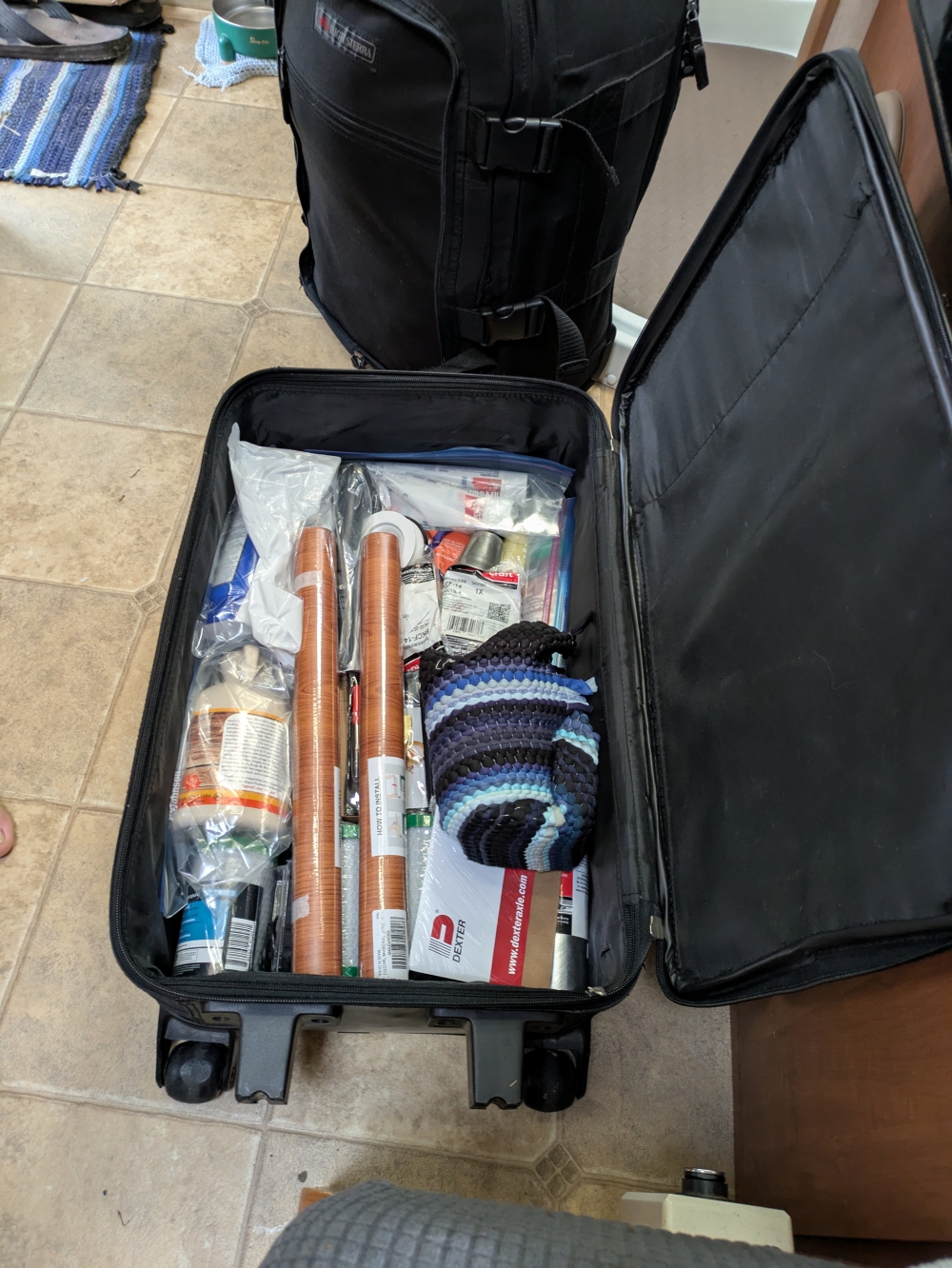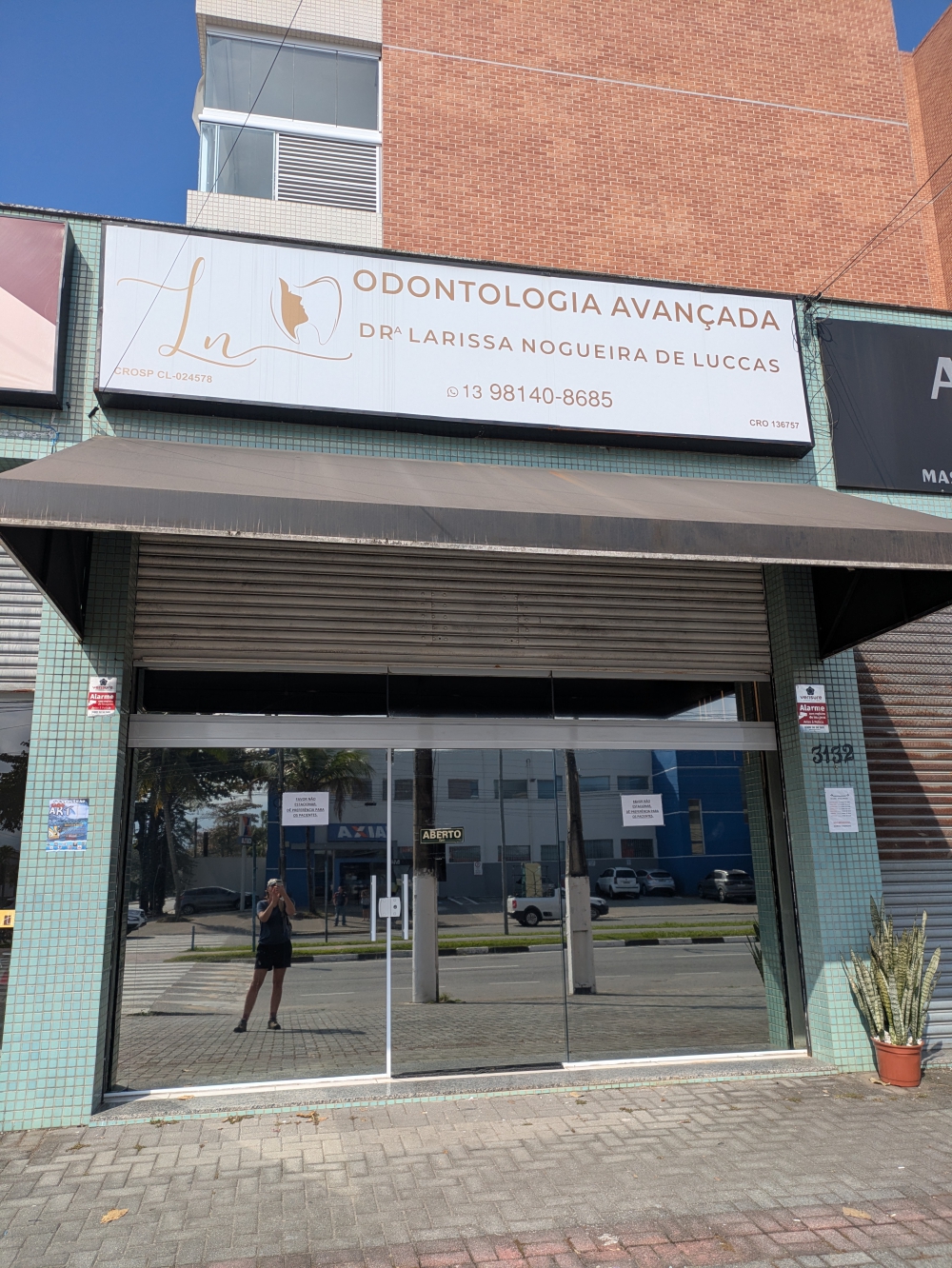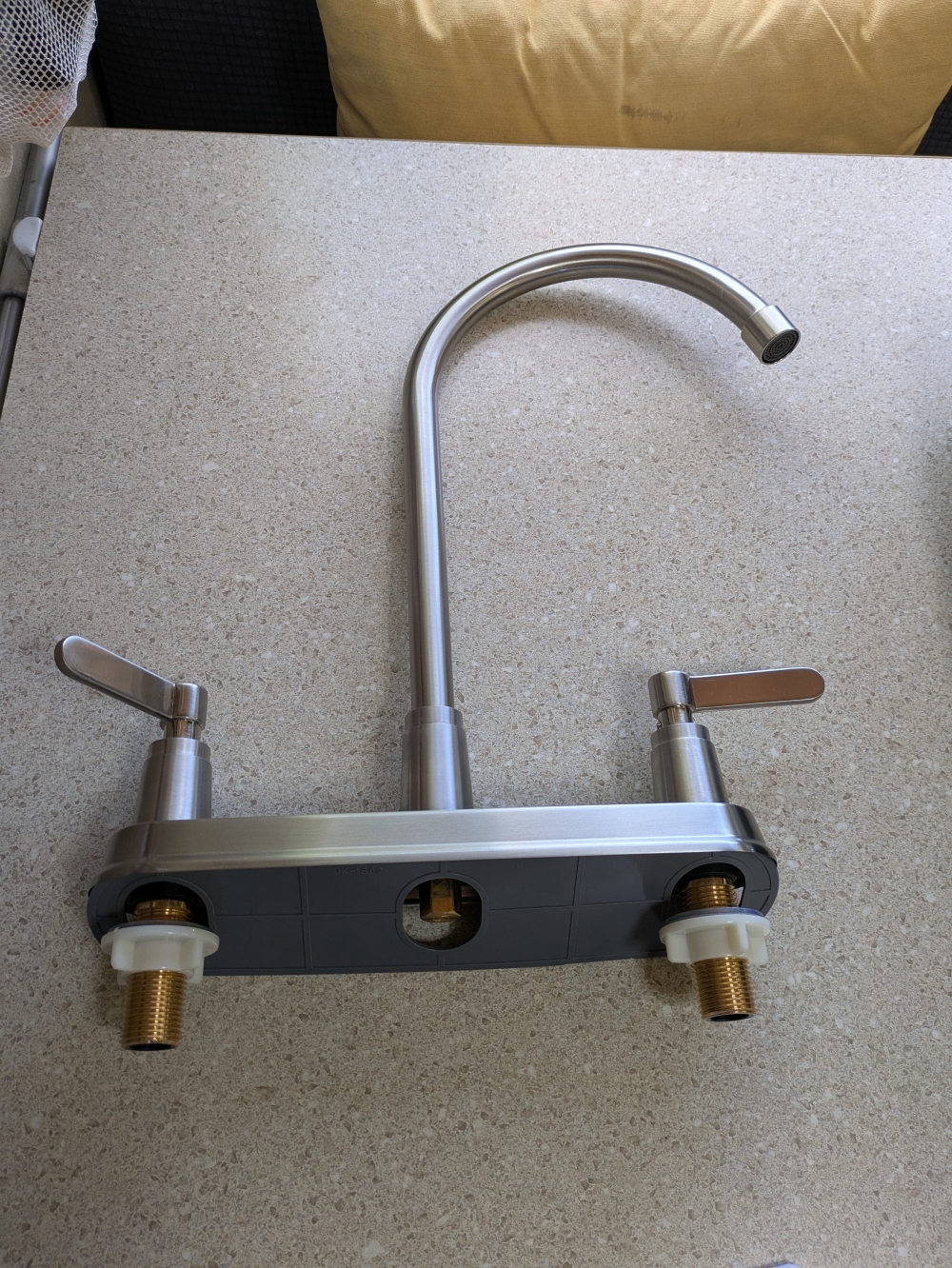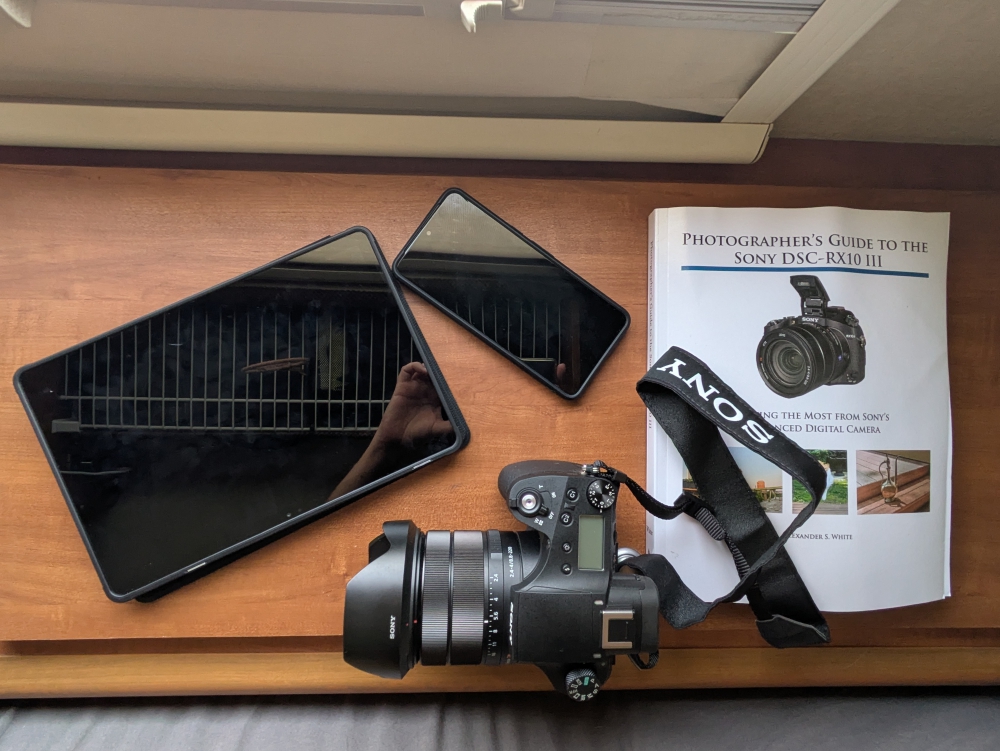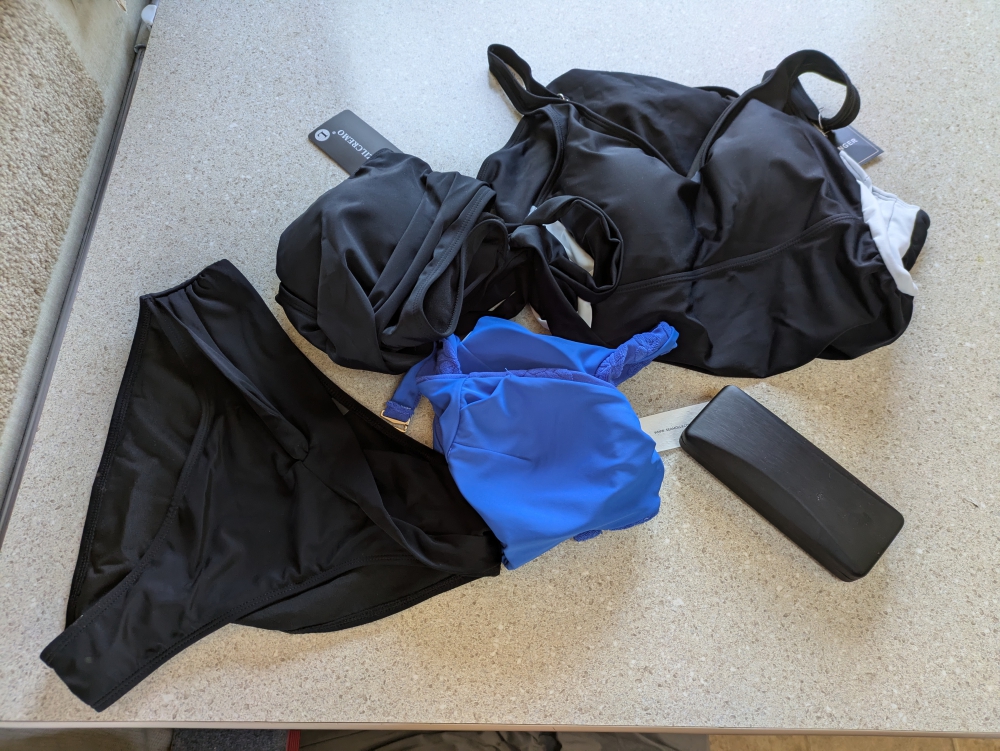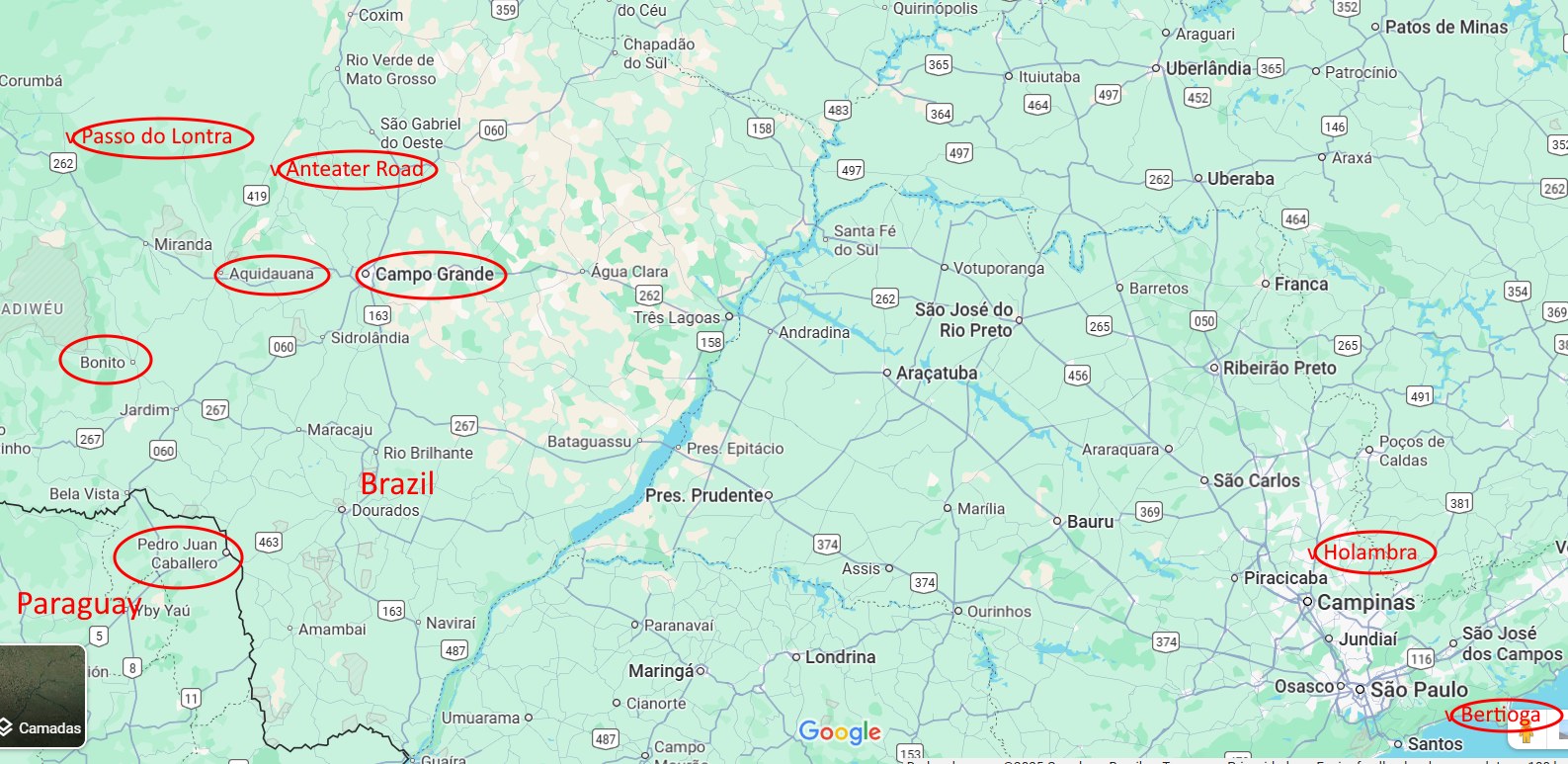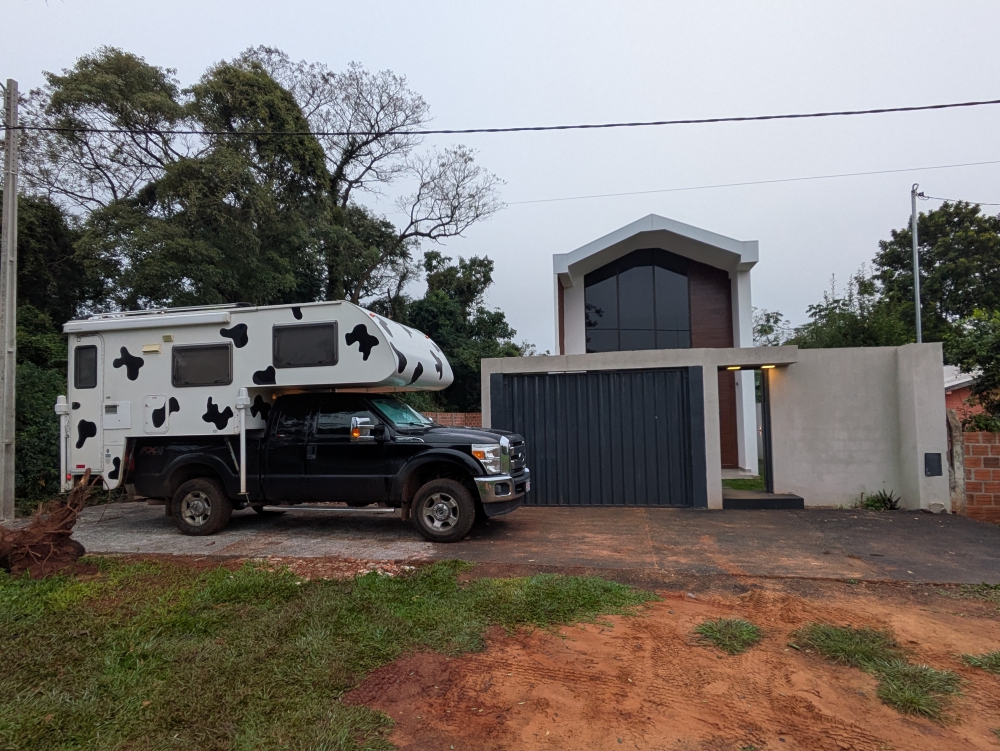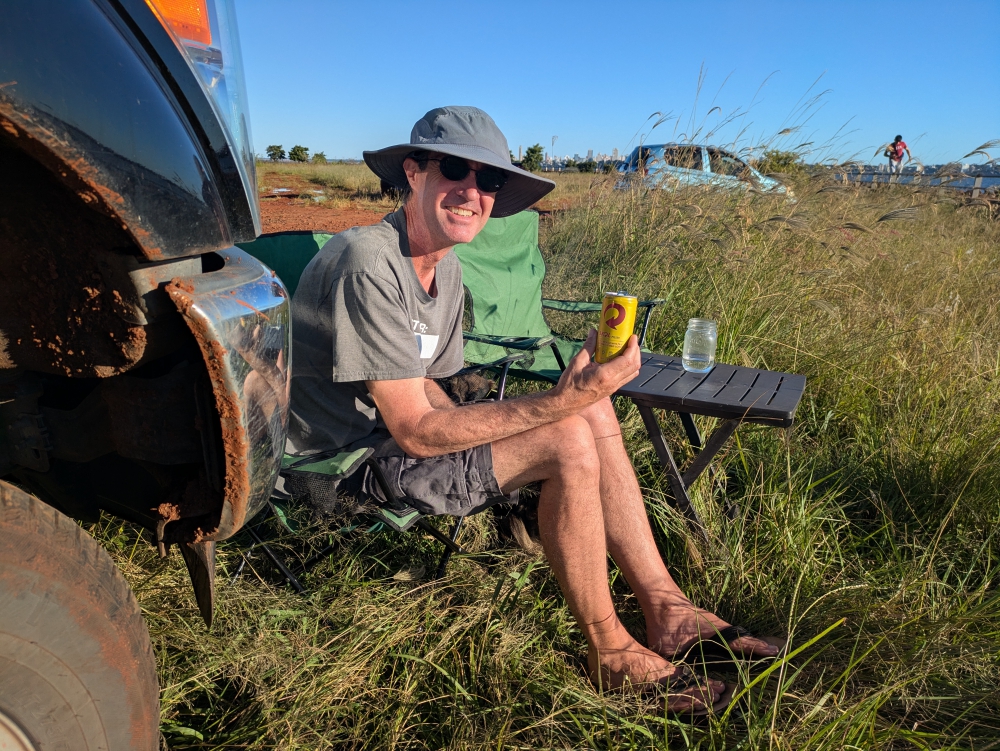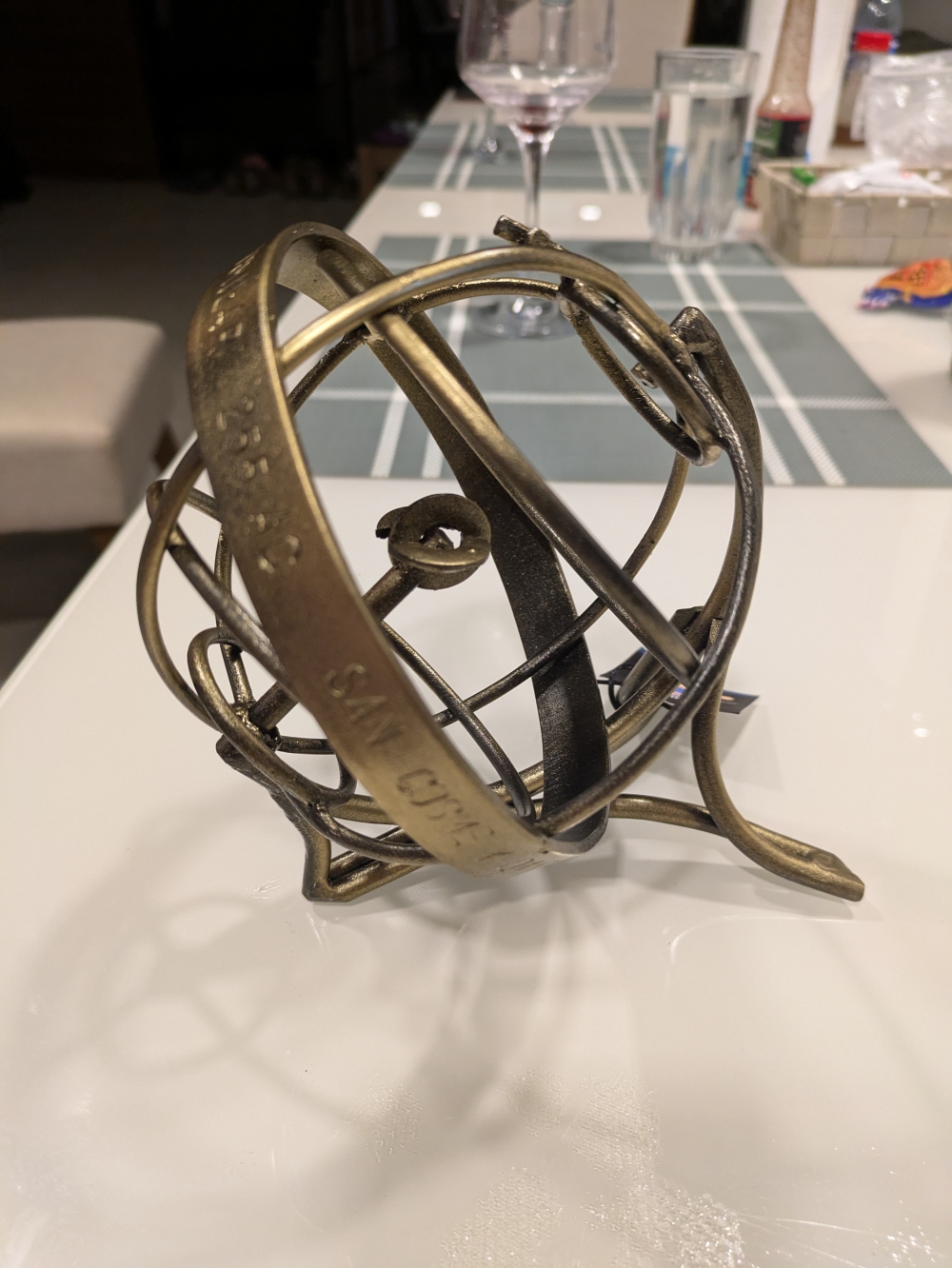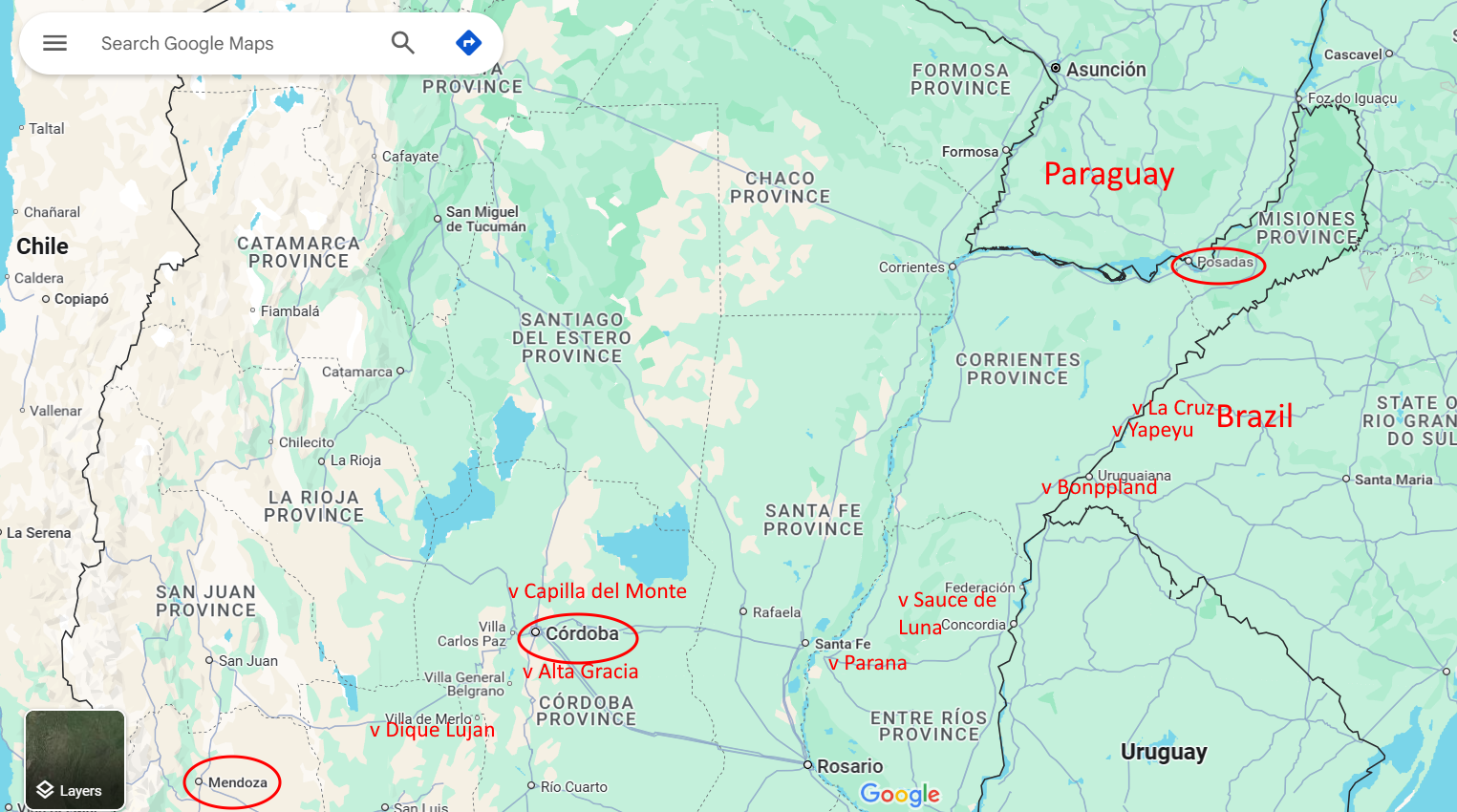Start your self-catered South American adventure now! All you need to embark on this trip of a lifetime is a plane ticket and your personal belongings. 🙂
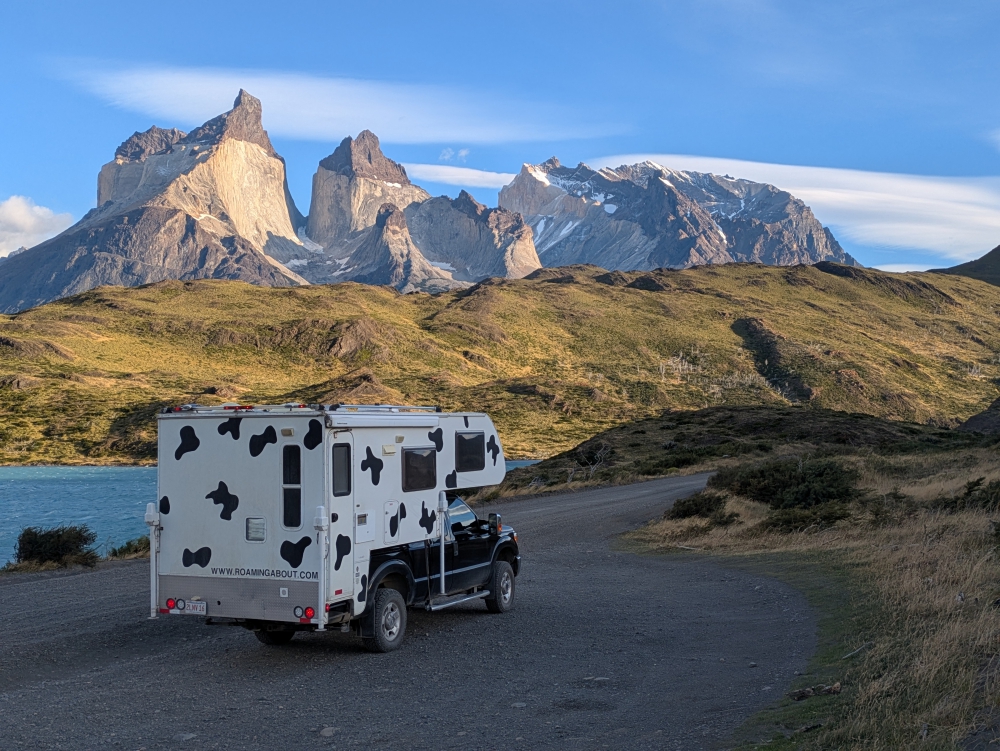
Bella in Chile
Mark, Maya, and I are wrapping up our three-year journey on the South American continent and are looking for a couple or small family that will enjoy our truck camper Bella as much as we have. If you know of anyone interested in an overland adventure with the perfect set-up for this part of the world, please let them know about our vehicle or share this post with them. We are very happy to answer any questions.
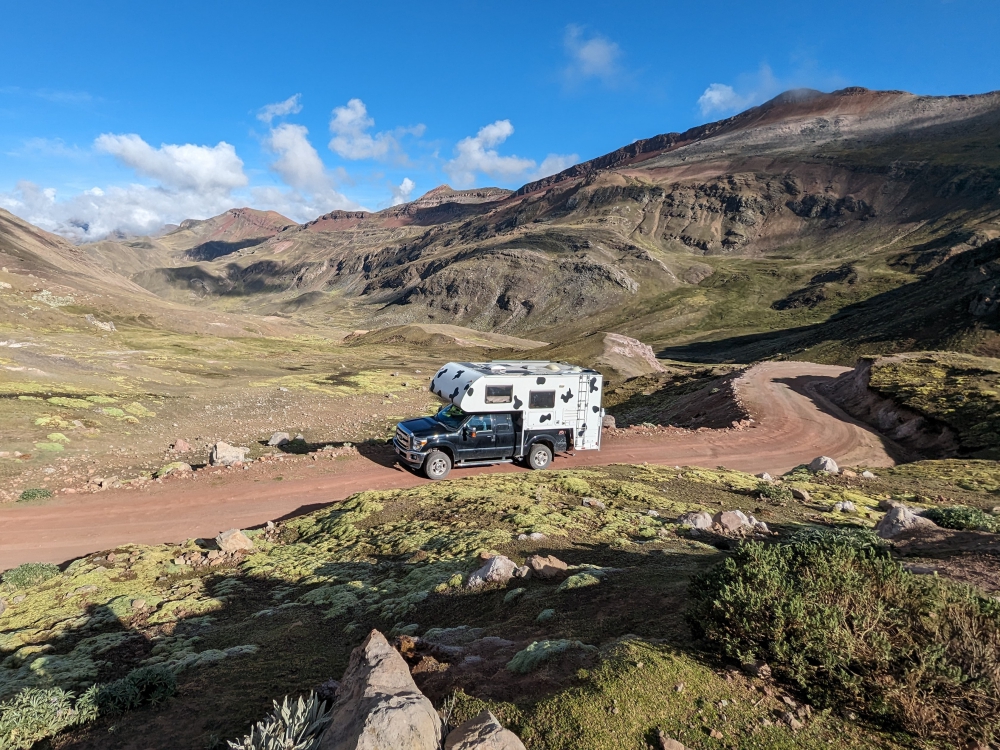
Thirsty Bella in Peru
Here are the details of our rig and a bunch of photos.
FOR SALE:
Fully Equipped Truck Camper – Ford F350 + Lance 830
This camper is set up for fulltime off-grid living and the vehicle is the perfect transportation to explore South America and beyond.
Price: $47,500 USD
Location: Argentina/Chile/Paraguay
Available: Now.
We speak English, Dutch, and some French and Spanish.
Registered/titled in the United States, easy transfer to any nationality via visitor.us.
You can also use a poder to travel while waiting for official US registration/title.
Camper and truck are meticulously maintained to provide care-free travel. Clean title/no accidents.
Likely one of the best equipped vehicles in South America with the lowest miles.
The cow décor brings smiles and laughs to the locals and allowed us to meet some great people along the way by giving them something to ask us about. We loved it and enjoyed making people smile during our travels. That said, the cow spots are stickers and can be removed if they are not your thing.
The camper can be removed from the truck to allow for exploration with just the truck.
Truck details:
- Currently ~72000 miles.
- 2016 F350 with 6.2L gas engine (385hp) and 6-speed automatic transmission. This engine/transmission combination is extremely reliable.
- Front seating for 3, or 2 with a center console.
- Extended cab with a back seat suitable for children and/or pets. Adults will be cramped. Seating for 3.
- 35-gallon (132 liter) fuel tank.
- Short truck bed (6’ ¾”) so it has a shorter wheelbase, which makes it easy to turn and maneuver.
- 4WD with in-cab switch on demand.
- Front hubs auto and manual lock.
- 4WD High and Low.
- Rear differential lock.
- Flex-fuel compatible so no issues with high ethanol fuel in Brazil.
- Power windows/locks. Windows in back doors are manual. Rear window in back is glass and electric.
- Running boards along the entire cab.
- Tablet mount on dash with wired USB-C cable.
- Dash cam.
- Moo horn (crucial safety equipment).
- 3M security film on truck windows to prevent them from breaking (easily).
- We are the 2nd owner.
- Oil change every 5k miles with full synthetic.
- Air filter changed every 20k miles.
- Coolant changed at 40k.
- Transmission oil changed at 70k.
- Transfer case oil changed at 40k.
- Spark plugs replaced at 60k.
- Front brake pads replaced at 48k.
- Rear brake pads replaced at 64k.
- All oil and filters are Motorcraft/Ford.
- Front tires replaced at 55k and rear tires replaced at 58k. AT tires with plenty of tread left.
- Vair portable air compressor.
- New truck battery 4/2024.
- Heavy duty tow strap.
- Titled in Massachusetts (US) and can be fully transferred to anyone (not just US residents) via visitor.us.
- Spare parts: Oil filters, belt, ignition coils, front and rear brake pads, caliper pins.
- Full set of tools with imperial and metric sockets, 3 torque wrenches, oil filter wrench.
- Tools for electrical repairs.
- OBD-II reader for Forscan Ford specific computer diagnostic software.
- Full Ford workshop manual in PDF.
- Truck is stock beyond the addition of Timbrens to help the rear suspension and Bilstein shocks all around.
- Torklift camper tiedowns mounted to the frame of the truck for camper attachment.
- Driven up to 15,500ft with no engine issues.
- Total vehicle height with camper is 10.6ft (~3.2m).
- 5-gallon jerrycan for extra fuel
Camper:
- 2008 Lance 830. Very rare side-door entry truck camper. Roomiest floor plan for a truck camper this size.
- Aluminum frame structure.
- We are the second owners.
- Outfitted specifically for off-grid travel in South America.
- Standing height inside is about 6’ 3” (1.9m). I am 6’ 1” and fit comfortably.
- Queen-size bed with 2” memory foam on top of spring mattress.
- Dinette area for 4 people that converts to a smaller bed.
- Wet bath with Separett Tiny composting toilet, wet shower and sink.
- Kitchen with 2-burner stove, large and deep sink, 12V oven, and 12V Isotherm compressor refrigerator.
- Water filtration system with .5-micron filter to allow for drinking tank water.
- 4 large awning-style windows with shades and screens.
- All windows and hatches have mosquito/bug screens.
- 2 ceiling fans. MaxxFan above the bed (in/out) and Fantastic fan in bathroom (out).
- LED lights throughout.
- Permanently mounted Starlink wired to 12V with on/off switch. Mounted inside the camper in a ceiling skylight.
- Permanently mounted router for use with Starlink. Gl-MT3000.
- Large manual full-length awning on side of camper.
- Outside LED lights on 3 sides of the camper.
- USB charging ports.
- Single 20lb US propane tank.
- 2 heaters (propane). 1 forced air heater for when it’s really cold; also keeps tanks and plumbing from freezing. 1 catalytic heater that uses no electricity and is great for above freezing situations.
- Gas grill with quick disconnect to use main tank for gas. No camping bottles needed.
- 1 large outside storage compartment.
- 48 gallons of fresh water. We added an additional 18-gallon tank to the standard 30 gallons. Plumbed together.
- 17-gallon grey water tank.
- 6-gallon hot water tank.
- No black tank. Storage space now as that tank was removed when we installed the Separett.
- Outside shower with hot/cold water.
- 4 electrical jacks with remote control to take camper off the truck.
- 400 Watts of solar panels mounted on the roof.
- Victron 100/30 MPPT solar controller.
- Victron Smart Shunt battery monitor.
- Victron Orion XS 50A DC-DC charger. Charges from truck alternator.
- Camper is wired for 120V. Can charge battery from a 120V power source (35A). A local transformer would allow you to plug into 220V outlets. We rarely had the need to plug-in for power because of solar and truck charging systems.
- 500W pure sine wave inverter.
- Single 272Ah lithium battery with Bluetooth management/monitoring.
- Keyless entry on the door with a keypad (or key).
- Fastgun turnbuckles to secure camper to the truck.
- Camper connects to trailer plug of truck for all camper driving lights.
- Camper connects via separate large Anderson style plug for DC-DC charging.
- Tablet mounted on wall as permanent battery monitor connected to all Victron equipment.
- Electric chainsaw to cut branches and small trees.
- Spare parts for lots of things like electrical work, plumbing, caulk, repair tape, etc. Spare water pump. Spare water filters.
- Lots of normal camping and household gear. Plates, pots, pans, glasses, outdoor chairs, bedding, snorkel gear, 12V vacuum, 2 camping tables, etc…..
Once you get used to maneuvering, the camper can be taken off the truck in about 10-15 minutes. It takes about 20-30 minutes to put it back on.
This flexibility offers the best of both worlds: you can leave the camper safe in a campground and take the truck anywhere you could imagine. For us, this combination of truck and camper is ideal for South America and we would not have done it any differently.
Original brochure: lancecamper.com/docs/2008-brochure.pdf
Video walkthrough: https://youtu.be/M-IlN4qigWk?si=YWeQ0TZigW7BUOXL
We have posted regularly on this blog if you’re interested in the full history of our overland travels thus far.
It is time for new adventures – for the new owners, for the camper, and for us.
Curious about a previous ten-year chapter in our nomadic lives, which includes eight years aboard a 35-foot sailboat in the tropics with dogs, check out my compelling, inspiring, and refreshingly honest travel memoir:




















































